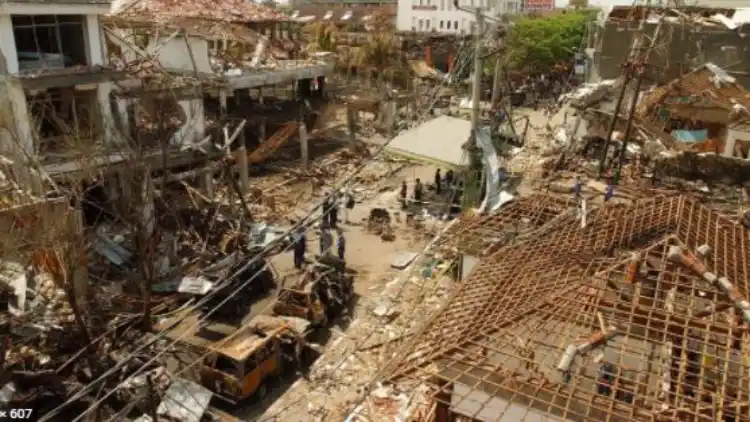
Shantanu Mukharji
In the aftermath of the Taliban triumph in Afghanistan two months ago, one thing perhaps is glaringly missing in the narrative is the subterranean simmerings in some South East Asian countries. It’s imperative to take stock of these underground happenings specially in the Islamic majority provinces of Southern Thailand, Malaysia, Indonesia, the Philippines, etc. as these merit a close watch to get a holistic idea about the larger and long-term effects of a regressive political dispensation like Taliban in Afghanistan.
The Southern tracts of Thailand, particularly in places like Patani, Narathiwat, Yala and other adjoining places bordering Malaysia, have often seen sporadic cases of hate and violence targeting Thai security forces. In the not so distant past, large-scale violence with a considerable number of casualties were reported. Al Qaeda and ISIS have exploited protracted disturbances in the Muslim world to pursue their agenda. They are active in the lands with sovereign states but where the federal authority is weak.. During the peak of ISIS dominance, transnational Jihadism in South East Asia has been described by some analysts as a “bottom-up” phenomenon with pre-existing militant groups (for instance in Indonesia and The Philippines) proclaiming allegiance to ISIS. In countries like Thailand, Malaysia and Singapore, individuals and small groups unconnected with terrorist networks, also seemed inclined to join ISIS or be its franchise. With the recent upsurge of the Taliban, these forces appear buoyant and emboldened in support of a resurgent Taliban.
In the meantime, the priority for the Thai government and Malay-Muslim militants should be to end the conflict that has cost almost 7,000 lives since 2004. The longer the conflict continues, the greater the risk of polarization, and insurgency spreading outside the deep south. The exodus of ISIS fighters from the Middle East, the propaganda victory of pro-ISIS fighters in the Philippine city of Marawi, Mindanao, and calls from ISIS and Al-Qaeda to avenge the Rohingyas who represent a potential volatile convergence for the region. It is, therefore, interesting to watch the trend post-Taliban take over in Afghanistan. Also, it is noteworthy that ISIS and Al-Qaeda have sometimes succeeded in affiliating with nationalist armed groups pursuing local agendas and have exploited conflict for their own ends, even within the peripheries of capable states.
Under the prevailing scenario, Malaysia calls for more vigil in light of the recent Taliban related developments. Presence of Indian fugitive and hate preacher Zakir Nayak, continues to enjoy the patronage of Malaysia and is capable of exploiting the Taliban takeover to the advantage of radical Muslims in SouthEast Asia. Further, soon after the Taliban's assumption of power in Kabul, leaders from the Malaysian Islamic Party or PAS congratulated the Taliban for taking control of Afghanistan. Such statements were considered to be very damaging and encouraged the Islamic zealots who have been calling for enforcement of Islamic law in Malaysia. Further, the Malaysia counterterrorism officials said that the return of the Taliban opened up an opportunity for terror groups to once again congregate in Afghanistan. This looks like a serious warning.
As regards the Philippines, places like Mindanao, Basilan and Jolo are already struck by Islamic terror with intermittent cases of killings, taking of hostages and related violence keep trickling in at regular intervals. These groups too are thought to be reeling under the spell of Taliban victory and are expected to gain further ferocity the step up their violence, based on religious extremism.
However, in the South East Asia, Indonesia remains the most prominent hub of threat because of two principal reasons: (a) on October 12, 2002, Jemaah Islamiyah (JI) – the Southeast Asian branch of al-Qaeda, the terrorist group behind the attacks in the United States – set off a series of bombs killing 202 people from more than 20 countries in the deadliest terrorist attack in Indonesian history. JI was virtually unheard of before the Bali bombings, but its notoriety spread rapidly. It had cells in locations including Malaysia, Singapore, Indonesia, and the Philippines, with the latter two countries bearing the brunt of its attacks. (b) there have been a large number of radicalized pro ISIS radicalized Muslims who were indoctrinated by online ISIS propaganda from 2010 onwards, and many such elements had gone to Syria and fought alongside the ISIS cadres in pursuit of a hate agenda. Such indicators are bound to further radicalize elements in Indonesia. Also, the Taliban’s return to power after the 20-year war with US, has boosted the morale of militants in Southeast Asia, inspiring some to make plans to go to the country and undertake military and other training though experts say this is a difficult prospect for now amid pandemic related travel restrictions. It is perhaps germane to mention those Indonesians who had joined ISIS were among the 5,000 prisoners freed by the Taliban soon after the takeover.
In sum, global fraternity entrusted with the onerous task of addressing the threats emanating from the Taliban ascent, as Indonesia, Malaysia and southern Philippines are seen as being most affected by the Taliban’s victory. On receipt of a larger picture concern in South East Asia, it can then be appropriately dealt with other than India, Bangladesh, Sri Lanka and Maldives.
(The writer is a retired IPS officer, a security analyst, and a former National Security Adviser to the Prime Minister of Mauritius. Views are personal)
